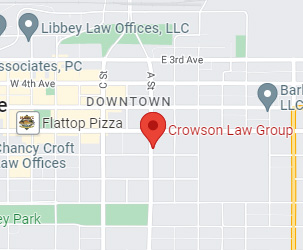Four Medical Facility Warning Signs
This article will discuss four warning signs that indicate a medical facility may be prone to errors.
Every hospital is unique. And each hospital, clinic, or doctor’s office is only as good as the staff and systems they have in place. This article will discuss four warning signs that indicate a medical facility may be prone to errors.
When it comes to clothing stores, some of us do not mind buying clothes from a store even if the salespeople leave a little to be desired. And, for various reasons, some are willing to compromise on the quality of the products they are buying. However, when it comes to our health, no one wants to gamble or sacrifice on quality, because your very life hangs in the balance of the competence and quality of service provided by the healthcare professional or establishment.
According to a recent study, medical errors are the third leading cause of death in the U.S. This occurs when healthcare professionals make mistakes, causing patients to suffer from infections, surgical errors, misdiagnosis and other potential problems. One way that these errors can be curbed is for patients to educate themselves about what to look for (and avoid) in a healthcare facility. While statistics on the number of errors for a healthcare facility may not be readily available, some red flags that a patient can take note of include the following:
Understaffing – many studies show that the best way to measure the capacity of a facility is the nurse to patient ratio. A 2014 study by Scientific American suggested that, “an increase in a nurses workload by one patient increases the likelihood of a patient in that hospital dying by 7%”. Therefore, the capacity of a facility has a direct correlation to the quality of care patients receive. In order to provide optimal care to patients it is necessary for facilities to minimize the nurse to patient ratio. Signs of understaffing include: staff seeming rushed or frenzied, an unusually long wait before you are attended to, etc.
Poor communication – giving proper care can be difficult especially in healthcare facilities. Consider the following facts:
a patient who has undergone surgery is likely to see on average 27 different healthcare providers during their hospital stay the average elderly patient sees 7 physicians across four different practice areas.
But statistics show that every patient has unique and complex needs. Where communication is not carried out properly a patient runs the risk of receiving conflicting treatments, diagnoses or medications that can cause harm to the patient. In addition to professionals effectively communicating well among themselves, it is necessary for healthcare professionals to communicate well with their patients in order to determine their health care needs.
Poorly maintained facilities – cleanliness is essential for quality medical care. If the facility looks dirty or appears to be in disrepair, this is a major warning sign for patients. A healthcare facility can have top of the line systems and specialist healthcare professionals but if there is dirt and grime, the risk of fatal infections and similar complications is magnified.
Distracted or fatigued providers means less efficient and effective quality of service.
For injuries sustained as a result of medical malpractice by a healthcare facility or professional contact lawyers in Anchorage.


